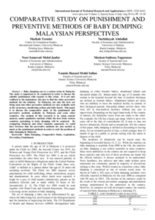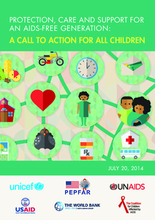Displaying 3521 - 3530 of 4403
Lumos is offering a four-day training course designed specifically to guide policy-makers and senior level managers and practitioners through the process of deinstitutionalisation (DI) and to help identify what needs to be done, at what stage and by whom.
Analyzing Malaysian and international practices in regards to “baby-dumping,” the authors of this research article are raising awareness of the punitive approach of the criminal justice system in handling baby dumping cases in Malaysia and other countries, as well as the limited, although important, prevention opportunities.
This literature review highlights the practices, policies and research on violence and abuse prevention in early childhood. it is guided by a socio-ecological model of contexts, participants and interactional complexity.
The first issue of the Journal has been published and now, ICEB is inviting abstracts for the next and second issue, which will come out in September 2014.
The Journal “Institutionalised Children Explorations and Beyond” (ICEB) wants “(t)o make available a platform for consistent sharing of information, knowledge enhancement and the development of a dialogue and debate amongst professionals, pol
This webinar will explore the role of government workers, particularly those at the district or sub-national levels, who play a key role in supporting community systems to enhance the delivery of quality services and support to vulnerable children and families.
The Future of Children, a collaboration of Princeton University’s Woodrow Wilson School of Public and International Affairs and the Brookings Institute, has launched a new project entitled “The Child & Family Blog.”
The theme is Stepping up the Pace. Online registration has opened and the conference organisers have issued a call for abstractsfor original contribution to the field.
This call to action is for all who are committed to achieving an AIDS-free generation.
The symposium Children and HIV: Start Early, Start Now–Integrated interventions for young children born into HIV-affected families will examine proactive, integrated approaches that focus on early childhood and HIV.


